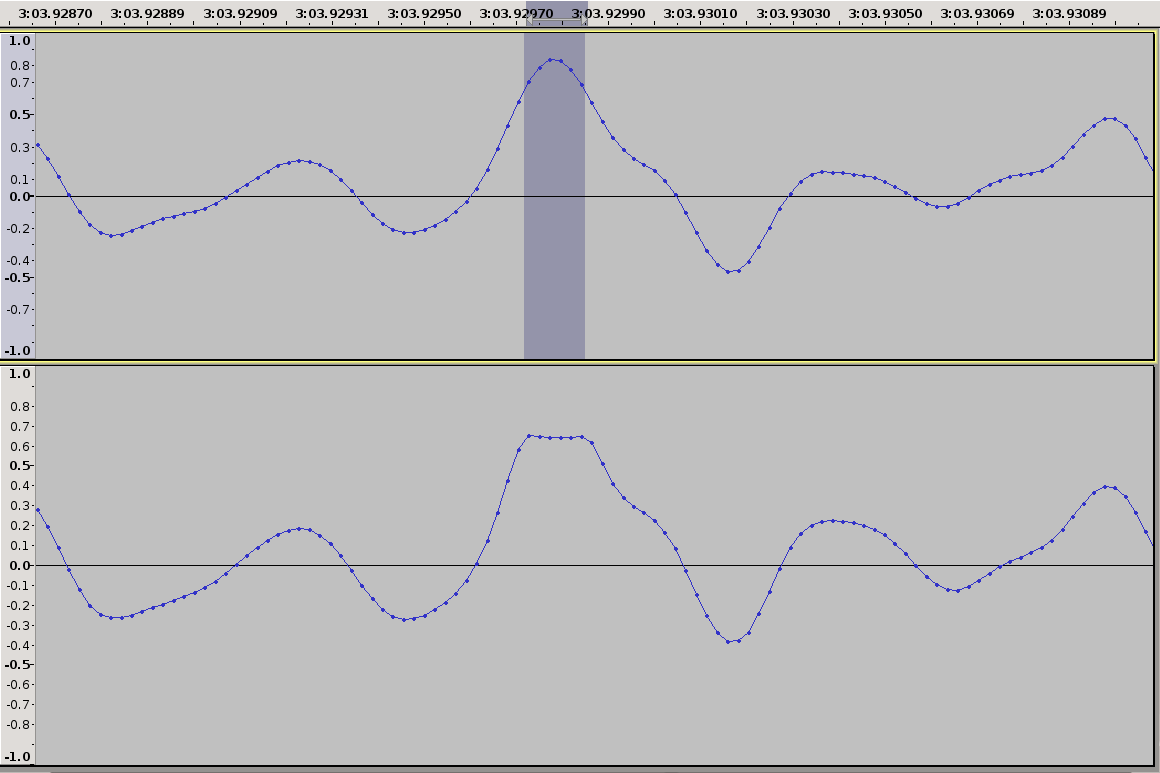
To do this, we will use the Amplify effect.

Prior to applying the Clip Fix effect, you will want to bring the volume of your source file down far enough to leave room for the interpretation and repair of the boosted (clipped) peaks. Click and drag with the mouse cursor over the area you want to apply the effect, or for those keyboard enthusiasts out there, use Shift + Left / Right arrow keys to make your selection. This part is really simple but extremely necessary.

Once the file opens in Audacity, our readers will see something like this:Ĭlick to Enlarge Listen to the above clip! Open the software and click File > Open, selecting the audio to be edited. Don’t see it listed? Open Audacity from Programs folder in the Start menu. Right-click the file and choose Open With and select Audacity from the list. Now that the file our readers wish to edit is on their computer’s hard drive, they will want to open the file with Audacity. Click the Title of the Audio you wish to Download Step 1: MP3 DownloadĪlready have your file ready to go on your desktop? Skip to Step 2!īefore one can edit their AudioAcrobat recording in Audacity, the first step is to make sure that the file resides on the hard drive of the computer on which editing will be performed.ģ.

How would I use this tutorial? If your audio sounds too loud or is noticeably distorted, and when looking at the waveform, appears similar to the image below rather than the one above, this tutorial will show you exactly how to repair the audio as best as possible, without having to re-record!īefore starting: Looking for Setup instructions? Our recent Audacity 2.0.0 for Windows Installation Tutorial should do the trick!įor today’s walk-through, we’ll be applying the Clip Fix effect using Audacity 2.0.0 ( Windows 7) as run on Parallels a virtual machine booted in ‘coherence mode’, running on a MacBook Pro. In today’s post we walk our readers through the process of using our favorite free, open source audio editing software for PC, aka Audacity to fix this clipping and restore the recording to a normal, non-distorted state! The second is that it has been recorded at too high of a volume or has been processed in a way that also pushed its boundaries beyond the audible spectrum. One is that the audio has been “overproduced” or, for a better lack of terminology, is battling against others in the loudness wars. There are only a couple main reasons clipping is present in an audio.


 0 kommentar(er)
0 kommentar(er)
